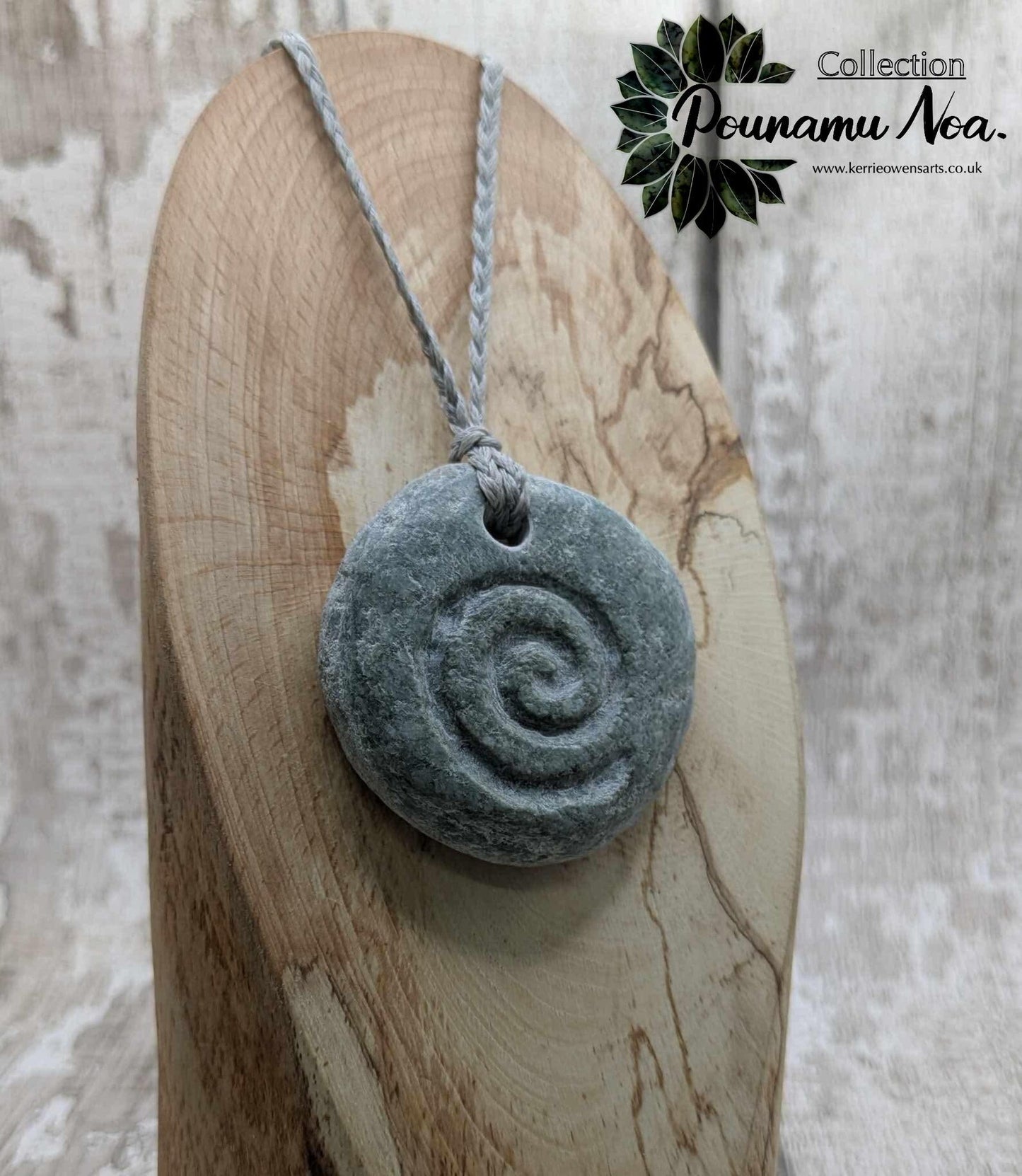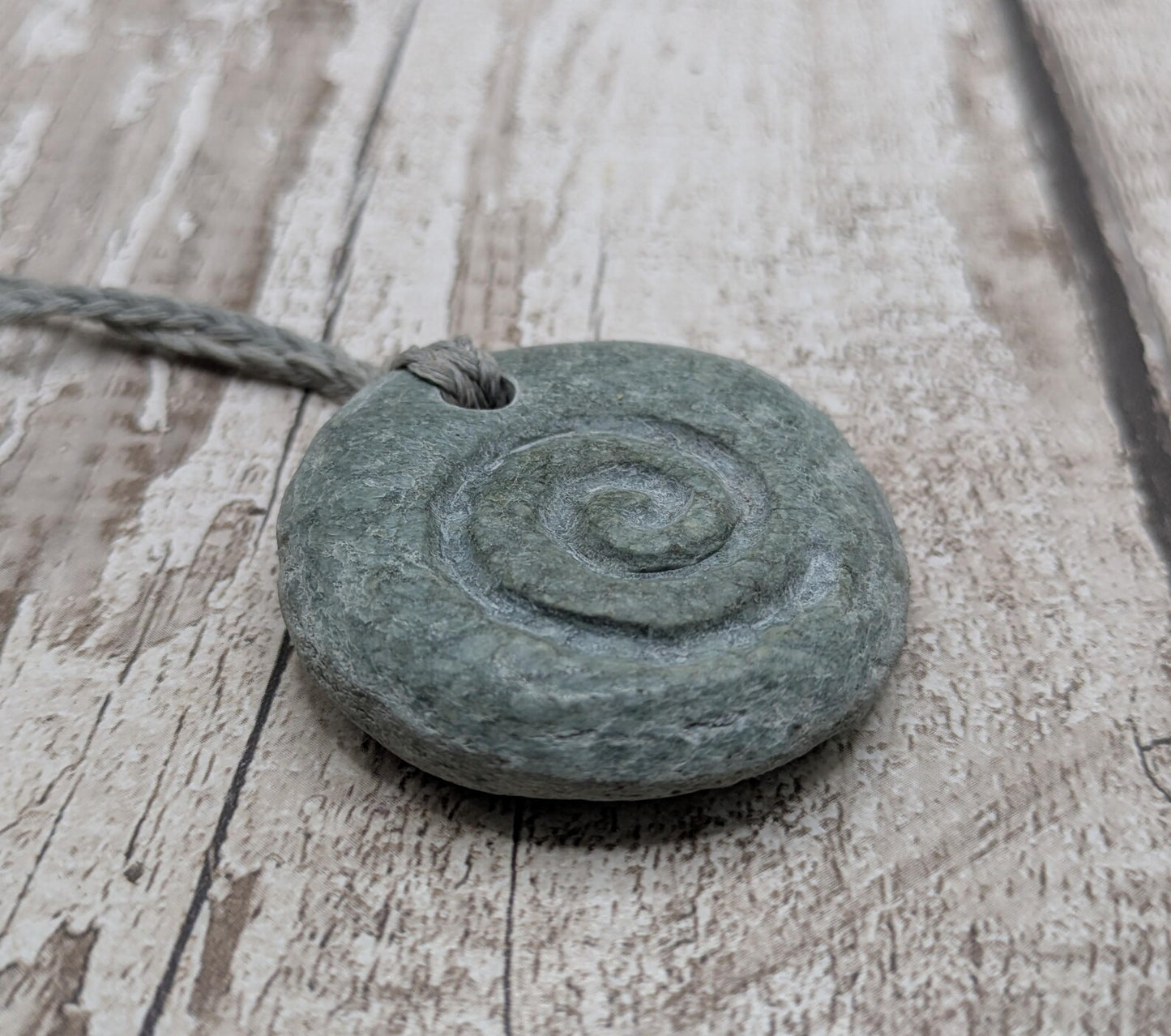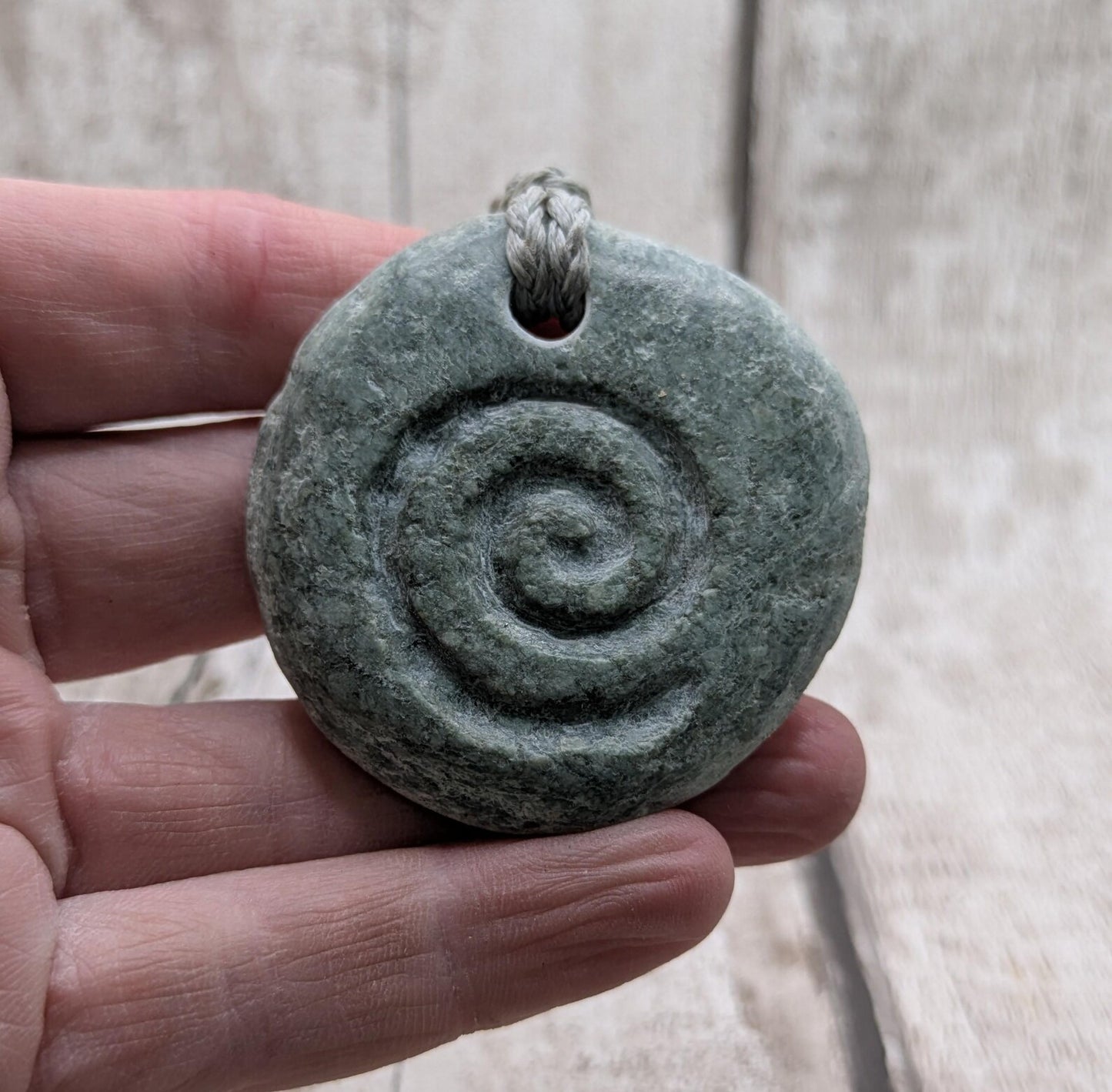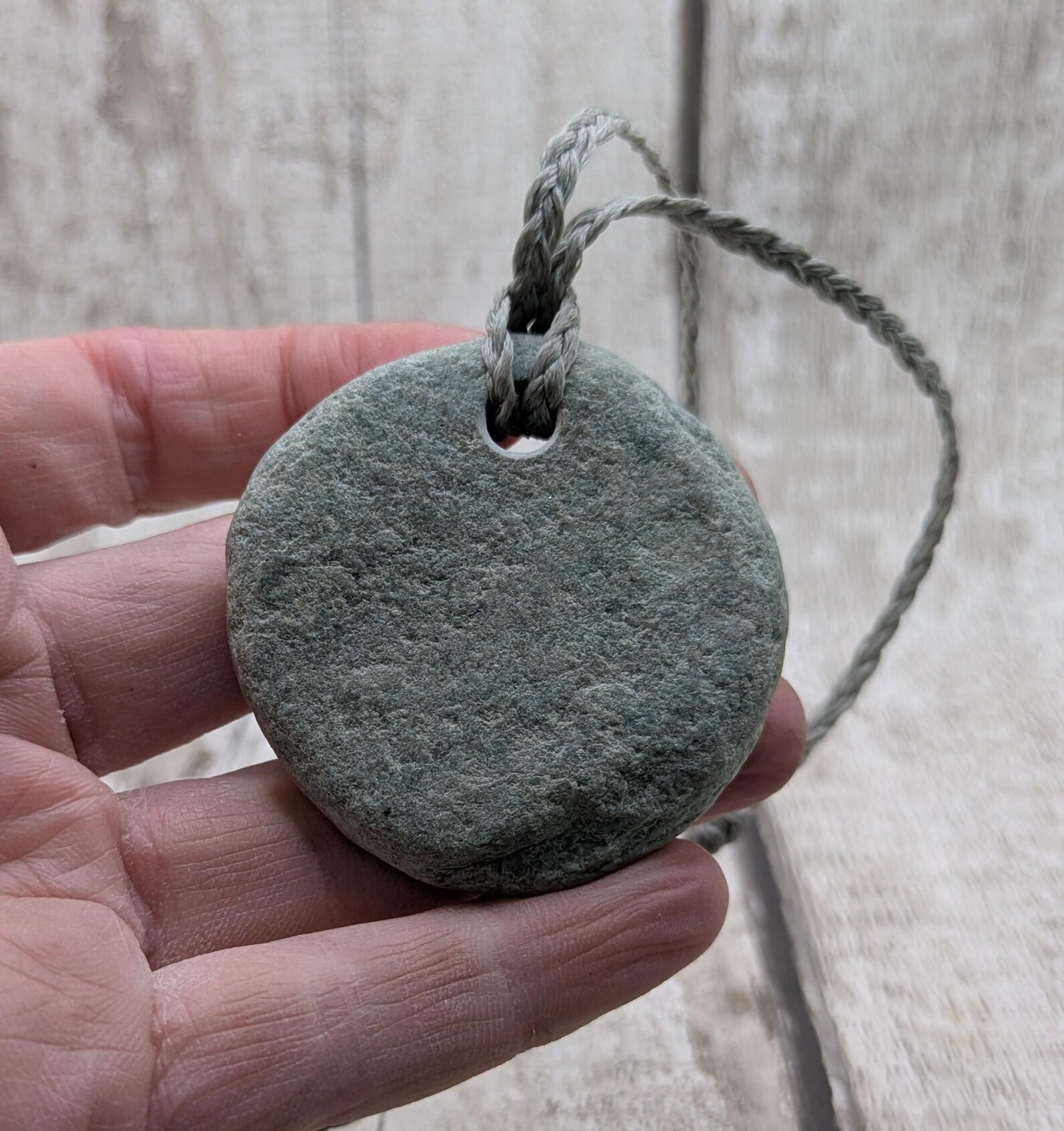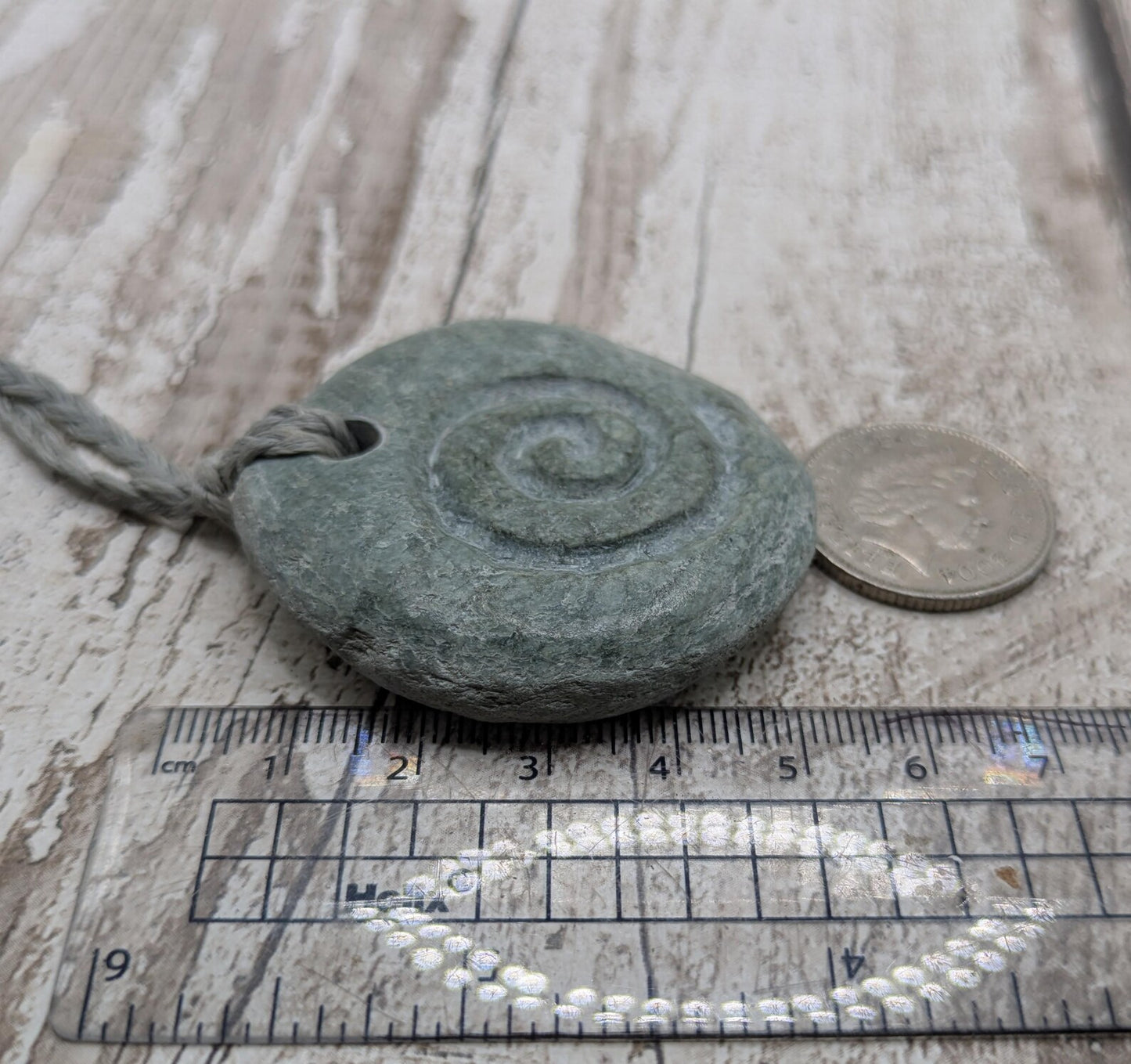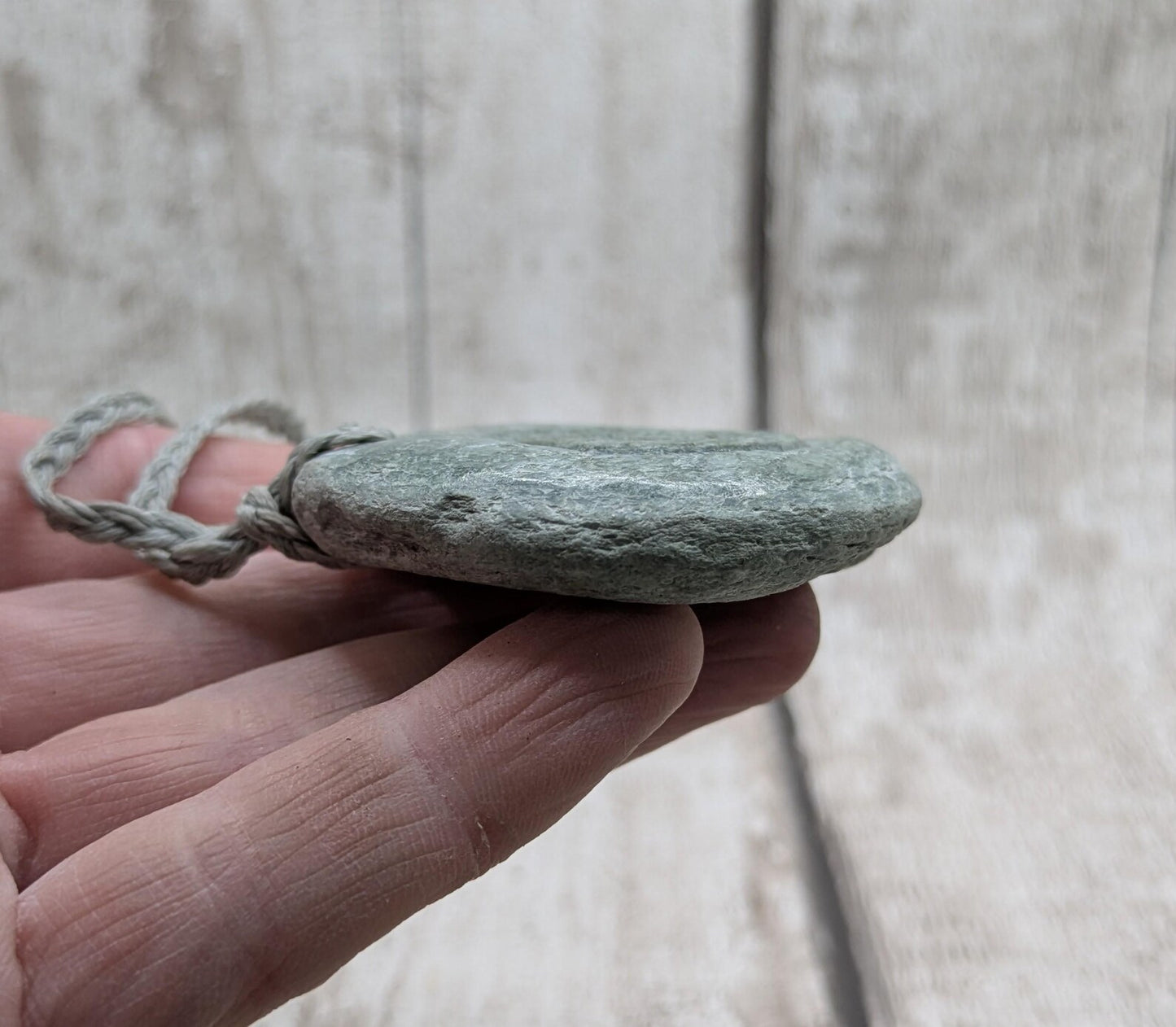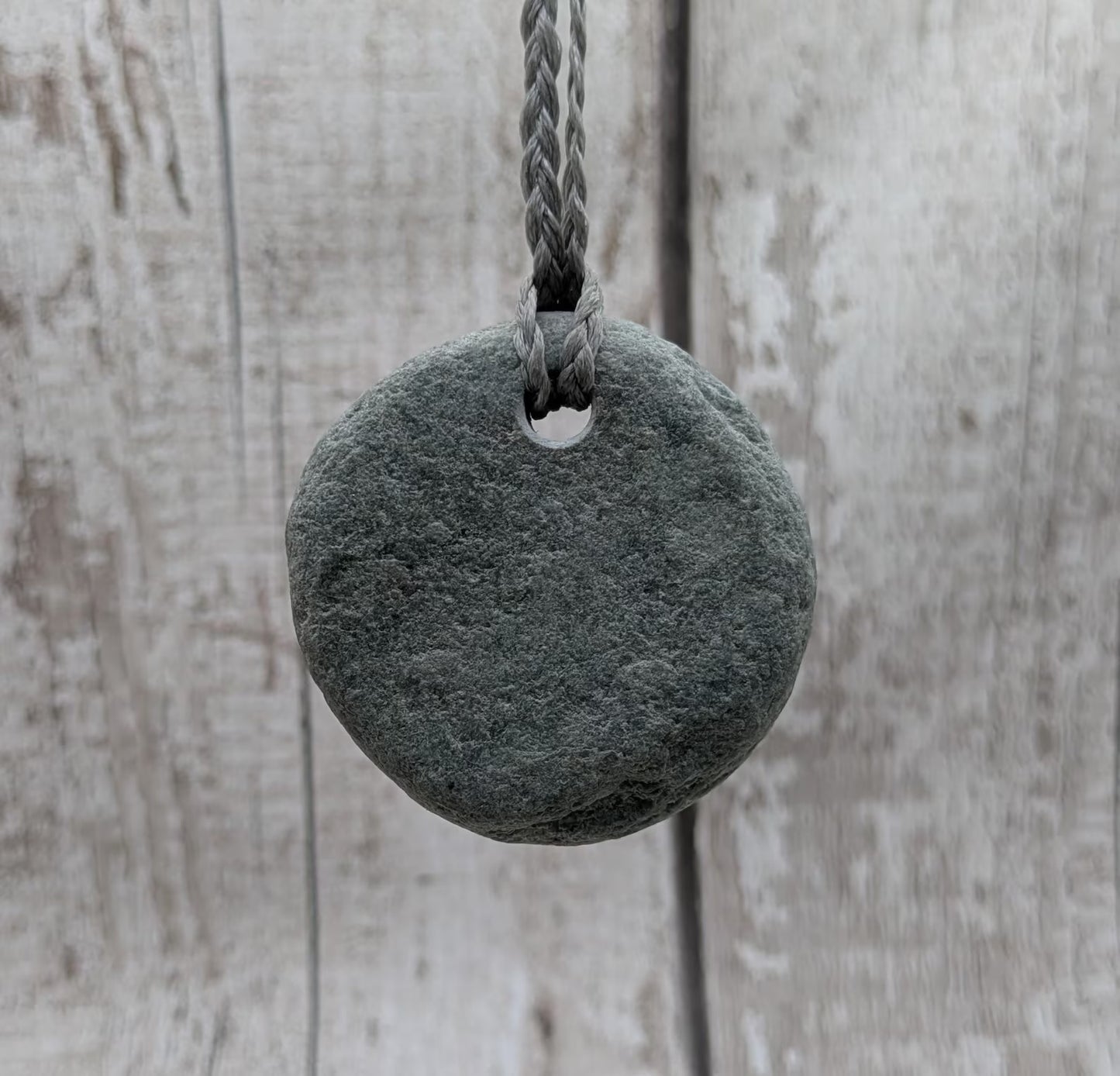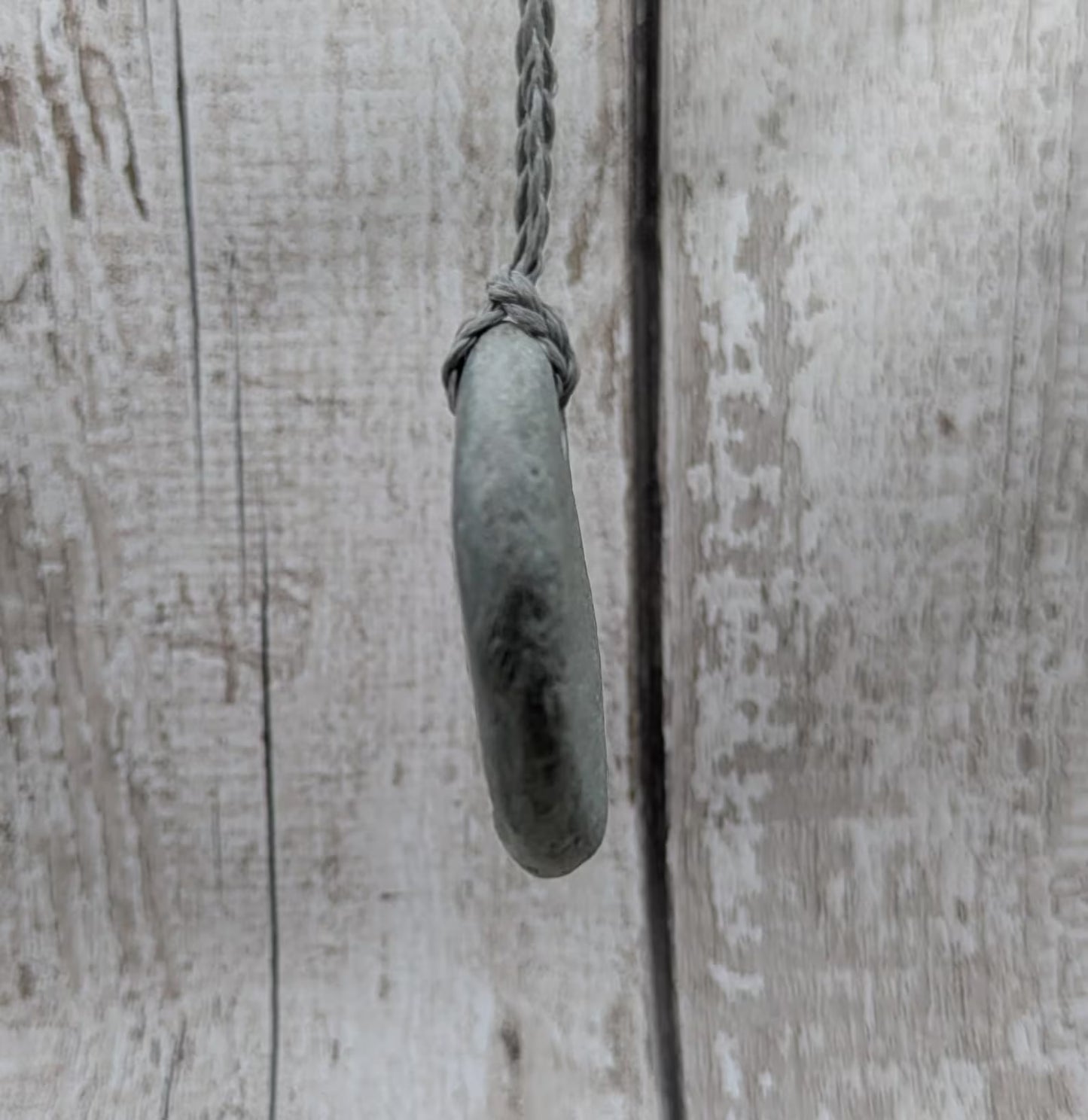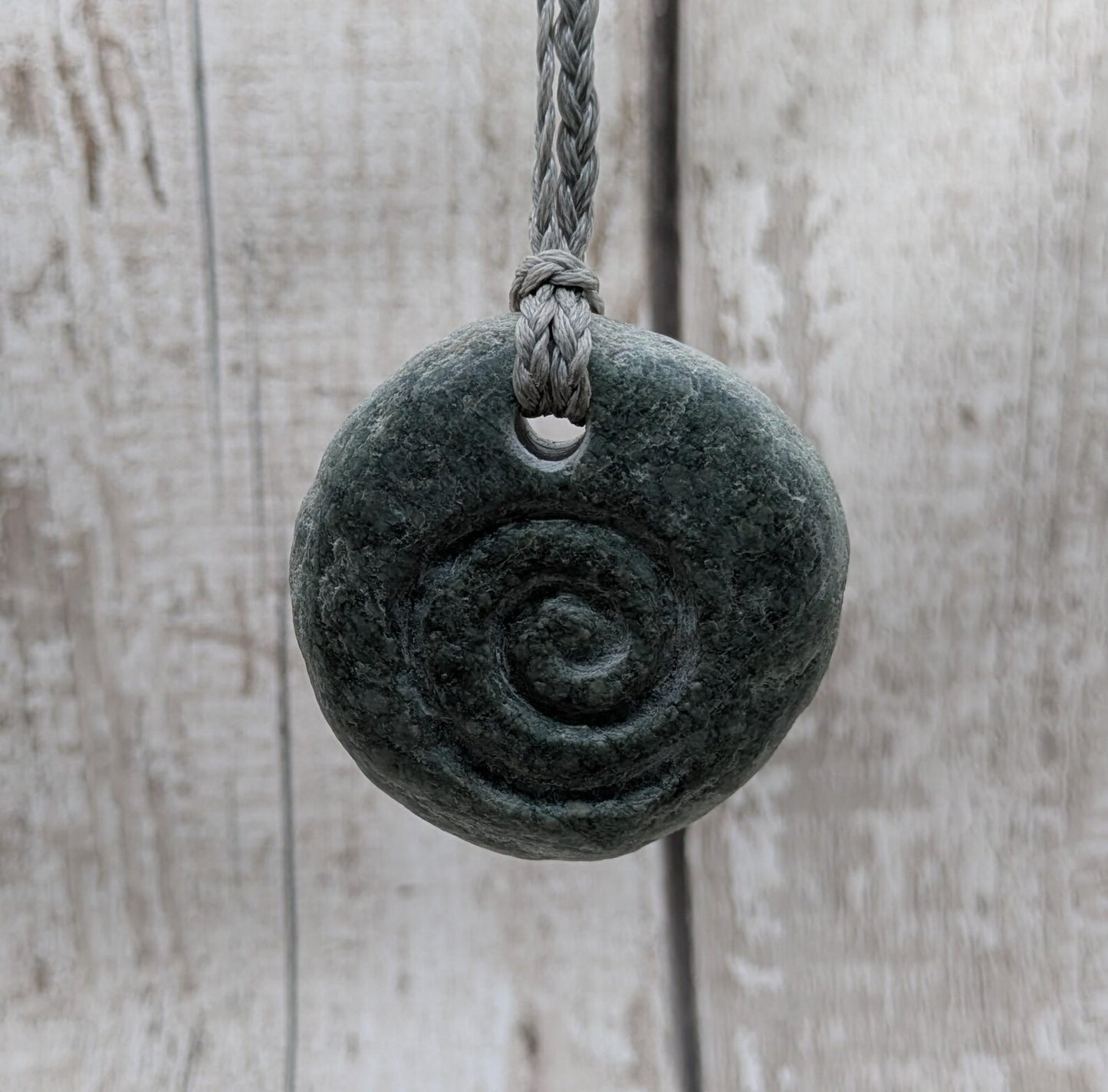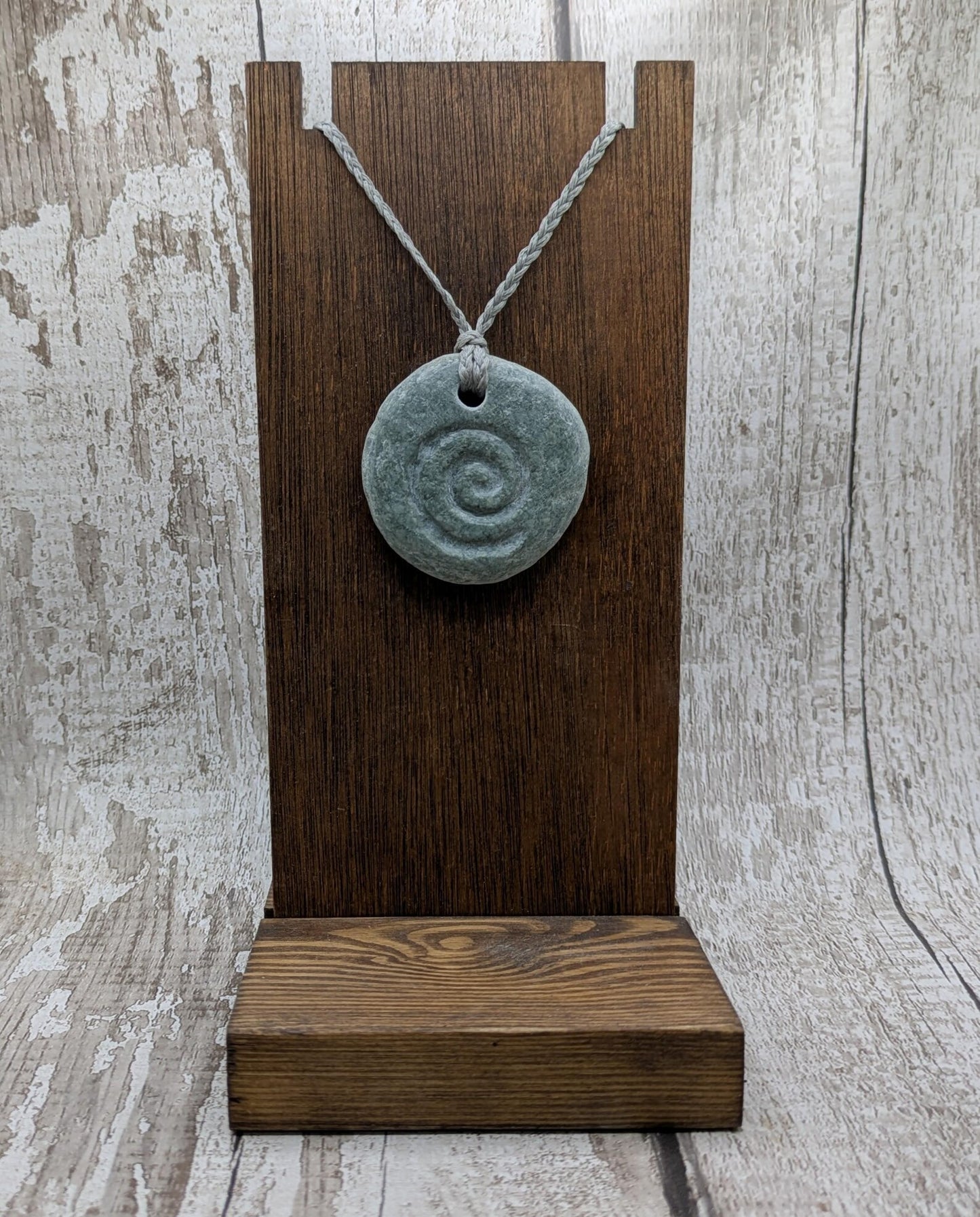Kerrie Owens Arts
New Zealand pounamu Jade pebble pendant with Koru spiral - Raw + Polished, Handcrafted Aotearoa Necklace, Spiritual & Cultural Jewellery.
New Zealand pounamu Jade pebble pendant with Koru spiral - Raw + Polished, Handcrafted Aotearoa Necklace, Spiritual & Cultural Jewellery.
Couldn't load pickup availability
Share
This pendant is crafted from low-grade New Zealand Pounamu (Nephrite Jade), shaped into a traditional Koru spiral design. The stone carries visible signs of its natural journey, including flaws, internal inclusions, and surface wear, giving it a raw, timeworn character. There may be an internal crack within the stone, though its structural integrity remains uncertain. These imperfections make the piece uniquely organic, reflecting the resilience and history of the stone itself.
Suspended from a cord or chain, this pendant embodies the deep cultural heritage of Pounamu, a treasured stone in Māori tradition, revered for its strength, mana (spiritual power), and connection to ancestors. The Koru spiral, inspired by the unfurling fern frond, represents new beginnings, growth, harmony, and the endless cycle of life.
Stone Properties
Chemical Composition: Ca₂(Mg,Fe)₅Si₈O₂₂(OH)₂ (Calcium Magnesium Iron Silicate Hydroxide)
Crystal Structure: Monoclinic
Hardness: 6–6.5 Mohs
Geological Origin: Sourced from New Zealand’s South Island (Te Waipounamu), where Pounamu forms within metamorphic rock under immense geological pressure. This specimen has likely endured natural weathering over time.
Spiritual Symbolism of Pounamu: Considered a taonga (treasure) by the Māori, Pounamu is traditionally passed down generations, absorbing the wearer’s energy. Despite its imperfections, this piece still holds the protective, grounding, and ancestral significance of Pounamu, making it a deeply meaningful talisman.
The Koru Spiral – Meaning Across Cultures
The Koru (Māori for "loop" or "coil") is inspired by the unfurling fern frond, representing new beginnings, growth, harmony, and the continuous cycle of life. It is an essential symbol in Māori culture, appearing in carvings, jewelry, and traditional artwork.
Beyond Māori tradition, the spiral holds deep meaning in various cultures:
Celtic Culture: The spiral represents eternity, the interconnectedness of all things, and personal growth. In Celtic art, the Triskelion (triple spiral) often symbolises life, death, and rebirth.
Ancient Greek & Roman Art: Spirals were used in architecture and mosaics to represent cosmic order, infinity, and divine forces at work in the universe.
Hinduism & Buddhism: The spiral is often associated with the chakra system and spiritual awakening, especially in Kundalini energy, which is believed to coil like a serpent at the base of the spine before rising.
Norse Mythology: Spirals appear in Viking rune stones and carvings, symbolising the journey of the soul and the cycles of nature.
Native American Cultures: Spirals are used to depict water, wind, and the journey of life. The "Man in the Maze" symbol of the Tohono O’odham and Hopi peoples represents personal growth and the paths we take in life.
Egyptian Mythology: The spiral is linked to the sun and the cyclical nature of time, particularly in the concept of rebirth and immortality.
This pendant is more than just a piece of jewellery—it’s a connection to ancient traditions, the wisdom of nature, and the timeless cycles of growth and transformation.
